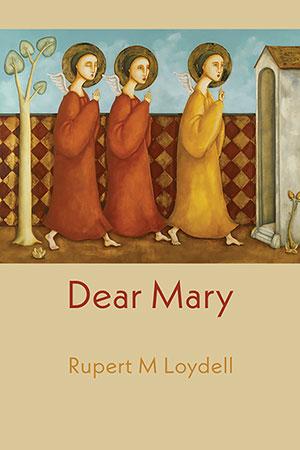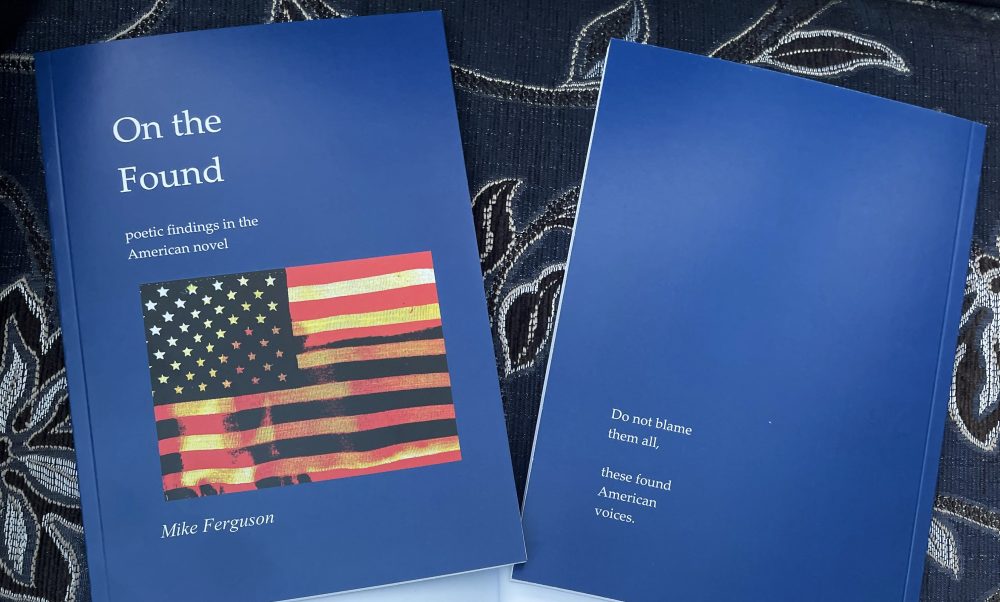
Dear Mary,
I am writing about Rupert Loydell’s love letter to you and want to share my views on this. I have questions to ask and observations to make. I trust this is OK – doing it like this?
Needless to say, his writing always demands attention. The words are suffused with thoughtfulness, and this is expressed with the most palpable honesty.
Please take these notes for what they are – plotting a journey through the book with immediate reactions and recurring celebrations. Even when my own doubts are unmoved by the moving declarations of his possible faith. I think this is one of the book’s great achievements: to not alienate when so much else in this world on religious revelation is a meaningless diatribe.
I’ll begin with a question:
If the shipping forecast is a presaging of discovering God and/or faith, is that discovery as surreal and/or complex as this? As inherently irreverent and comical? Those of us who read on shall see, if we listen further to the announcements, this radio’s shifting annunciations.
The poet, reader of poetry and painter will try to discover by capturing what is seen and read, but will this be faithful, a realist’s representation or the hot sunshine light of Tuscany blurring out the colours with its glare? When the poet scares a reptile in the swimming pool with the splash of his dive, we hope it isn’t the Lizard King who will seek revenge.
As the poet asserts itself over the painter, there is a clash of expectation, and it is the writer who needs-must put this into words,
Now I’m reduced
to black and white:
shadows on the page,
cold lines of type,
pale marks and
faint grey stains.
Lost in colour,
I don’t have
the words
although words
are all I have.
[‘Lost in Colour’]
Annunciations repeat themselves, varyingly. It haunts as much as it conveys – all the empty rooms waiting to be filled.
If colour has its own meaning, I must read on to experience this. Yes?
If Italy/is a love letter to God these poems about Italy have fallen deeply.
Finding angels in a museum is connecting to the meaning of life, and in this respect I can acknowledge the act of faith, even if I do not personally believe.
When the paintings spoke to him, their clamour said more than he needed to write or paint himself. Then. But now he has, it makes sense how their
….Frozen movement
implies captured noise….
[‘In the Dark, Listening Carefully’]
I like the sound of that, and much else that I read, discovering then and again later.
At times, like ‘Tonight’, the observations are soothing. They are not searching, but simply seeing and that announces its own kind of calm and acceptance of what is, without the need to explain further.
When the churches close for repair and their frescoes are inaccessible, is this the diminution caused by a secular world, or the last vestige of preserving a secret?
Grey is grey is grey is grey is gray.
While it rarely rains in Tuscany, when it does it is the wettest rain ever, a fluid/flowing/seeping single line about this as the perfect way to teach the rhythm of a complex sentence. Then there’s that last declarative. [‘Rain in Tuscany’]
I think, Mary, there is a poem about your pregnancy which makes great claims for its ultimate altruism. It is a glorious idea, and I wish I could believe it.
I understand the wonder and awe and beautiful simplicity of the recognition and transference. For me, the paintings resonate with the belief in their colours. There are all kinds of inspiration.
I like the idea in ‘Taken Up’ where the profound is presented in the metaphor of the ordinary. A ruse, yes, but it works to make all of this writing work at many levels,
Her heaven may be imaginative
rather than something literal,
her annunciation not historical
but cultural, a folded paper note
passed along the back row of class
under the eyes of Joseph and God.
[‘Taken Up’]
I didn’t know angels could be found on Tinder.
‘Shadow Triptych’ is a major piece – at times meditative; at times raging in its painterly imaging,
Step into the shower through smeared
stripes of curtain, and shout at yourself
being crucified.
At times it is philosophical,
In the corner a man on a red sofa scratches
at the air, revealing the links between
power, metaphysics, theological realism and
visual pleasure. We can see right through
elaborate ideology to the painter’s mark.
At times the horror is painted as a presaging you’ll not hear in the weather forecast,
Tread the bed with bare hands, avoiding
the corpse spread out across your duvet.
The slatted blind is crimson in the centre
of the window. If human blood can be
contaminated, what is to prevent the global
economy from contracting a deadly virus?
[‘Shadow Triptych’]
Mary! He was once abducted [is that what it means to be ‘taken up’?].
Earlier, I did my best Gertrude Stein impression. Did you get that? Well, forget it. I didn’t know there were actually so many different types of grey. Excusing the paradox, it is a colour of many variable depths. Some are comic; some strike to the core of our own grey thoughts.
That ‘Silent Annunciation’. It reminds me of his White Album poem. I think that is what it was called.
Dear Mary, ‘Dear Mary’ is like many songs sung while smiling.
I think it is possible to get carried away with a metaphor. I do it all the time, a spinning top spun on a marble surface forever. But this is taking the piss,
….absence makes
the heart grow fondue…
yet it did make me laugh.
[‘Her Room’]
‘Surveillance System Annunciation’ does go some way to contemporising belief and understanding, and it would be ironic, therefore, to call something so technically visual as ‘blind faith’. Is this what ‘taken up’ means? And no, I’m not implying ‘taken in’. I am too respectful of the honesty to be cynical; too endeared by the beauty of expression. Not believing does not mean not getting it.
‘My Paper Aunt’ sounds flimsy, but this is a substantial relative ruse: the poetry of this superb – sustained quatrains of insight and meditative thinking aloud, language balanced throughout, occasional playful rhyme, and always the ruse ruminating.
I think there is a sermon made of poetry which is probably the best kind, especially his as I don’t think it is moralising, or even trying to persuade others, rather just himself – or not, this is up for negotiation it seems – and wearing the blue dress after dancing all night is the sweet normalcy of it all, but I still cannot accept the resignation of,
her only answer is through obedience
and I can’t ask you directly, Mary, as that would be a cheat too big even for paradox.
[‘Sudden Impact’]
I don’t think one would find this in Collins or the Oxford Concise,
Colours have psychological and moral overtones,
are vessels of a transcendental essence,
a synchronicity between the sonic and visual
[‘Remarks on Colour’]
But we should.
A list poem Mary! I love these. So much packed into repetition, pattern, building blocks, relentless focus.
The final poem, ‘Evidence’, asks the obvious questions about finding/having faith in a secular and technological world. Renaissance art had no such qualms about representing what it believed in, and perhaps one does need to travel to another world – not just the physical otherness of Italy – in order to distance oneself from doubt and look closely at the confident colours of others’ believing. So we have travelled too through these words and honesties. And if the attempt ‘to write about faith today’ is swept up and flown with its angel wings of this writing, I am happy to admire the flight.
You know, Mary, one comes to the end of this collection and there is very little sense of darkness. Grey, yes! But not the black of despair. That in itself is uplifting.
Yours, as ever,
MF
For further details and where to order, visit here.

Pingback: Poetry Reviewed 2017 | mikeandenglish
Pingback: ‘A Confusion of Marys’ by Rupert M Loydell and Sarah Cave – Shearsman Books | gravyfromthegazebo